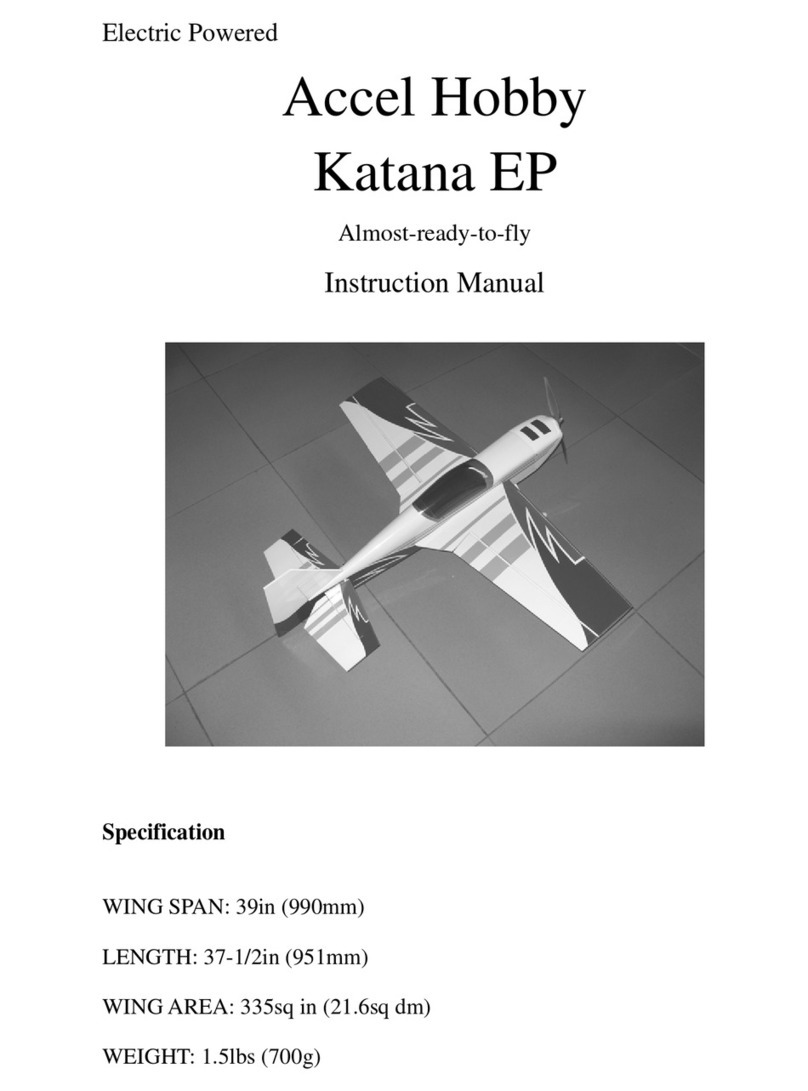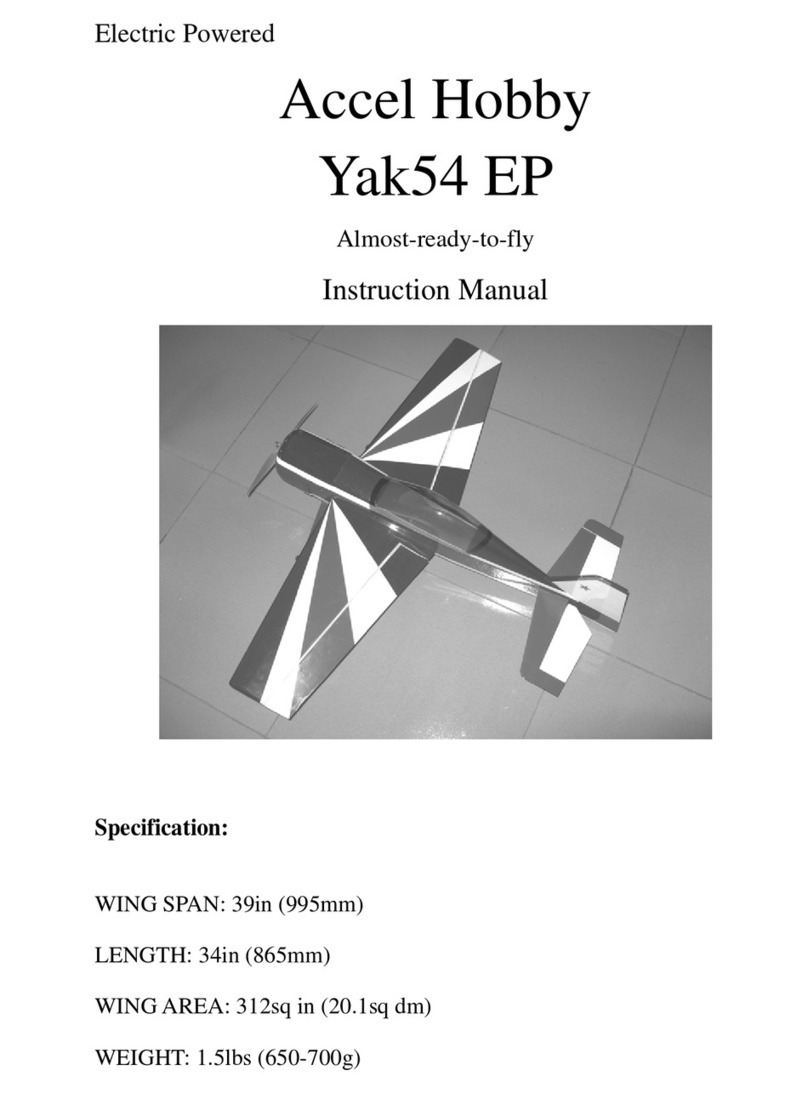
2
Table of Contents
Introduction……………………………………………......2
Important Safety Precautions .....................................2
Decisions You Must Make............................................3
Engine Selection.............................................................3
Radio Equipment ...........................................................3
Additional Items Required...........................................3
Hardware and Accessories.............................................3
Building Supplies and Tools...........................................3
What is 3D? ..................................................................3
Kit Contents .................................................................4
Wing Assembly.............................................................5
Install the Stabilizer and Elevator...............................7
Install the Fin and Rudder...........................................8
Control Surface Installation........................................8
Radio Installation ........................................................9
Motor and Battery Installation ..................................11
Landing Gear Installation ..........................................11
Final Assembly ..........................................................12
Control Throw Adjustment ..........................................12
Control Surface Throws ..............................................12
Balance Your Model...................................................13
Balance Your Model Laterally...................................13
Construction Checklist..............................................13
Introduction
Remember: Take your time and follow the instructions
to end up with a well-built model that is straight and
true.
If you have not flown this type of model before, we
recommend that you get the assistance of an experienced
pilot for your first flights. If you're not a member of a club,
your local hobby shop has information about clubs in your
area whose membership includes experienced pilots.
In addition to joining an R/C club, we strongly recommend
you join the AMA (Academy of Model Aeronautics). AMA
membership is required to fly at AMA sanctioned clubs.
There are over 2,500 AMA chartered clubs across the
country. Among other benefits, the AMA provides insurance
to its members who fly at AMA sites and events.
Additionally, training programs and instructors are available
at AMA club sites to help you get started the right way.
Contact the AMA at the address or toll-free phone number
below:
Academy of Model Aeronautics
5151 East Memorial Drive
Muncie, IN 47302-9252
Tele. (800) 435-9262
Fax (765) 741-0057
Or via the Internet at: http://www.modelaircraft.org
Protect your model, yourself and
others. Follow these important safety
precautions!
1. This airplane should not be considered a toy, but
rather a sophisticated, working model that functions very
much like a full-size airplane. Because of its performance
capabilities, this plane, if not assembled and operated
correctly, could possibly cause injury to yourself or spectators
and damage property.
2. You must assemble the model according to the
instructions. Do not alter or modify the model, as doing so
may result in an unsafe or unflyable model. In a few cases the
instructions may differ slightly from the photos. In those
instances the written instructions should be considered correct.
3. You must take time to build straight, true and strong.
4. You must use an R/C radio system that is in first-class
condition, and a correctly sized engine and components
(fuel tank, wheels, etc.) throughout the building process.
5. You must properly install all R/C and other components so
that the model operates properly on the ground and in the air.
6. You must check the operation of the model before every
flight to insure that all equipment is operating and that the
model has remained structurally sound. Be sure to check
clevises or other connectors often and replace them if they
show any signs of wear or fatigue.
7. If you are not already an experienced R/C pilot, you
should fly the model only with the help of a competent,
experienced R/C pilot.
8. While this kit has been flight tested to exceed normal use,
if the plane will be used for extremely high stress flying, such
as racing, the modeler is responsible for taking steps to
reinforce the high stress points.
Note: We, as the kit manufacturer, provide you with a top
quality kit and instructions, but ultimately the quality and
flyability of your finished model depends on how you build it;
therefore, we cannot in any way guarantee the performance
of your completed model, and no representations are
expressed or implied as to the performance or safety of your
completed model.





























